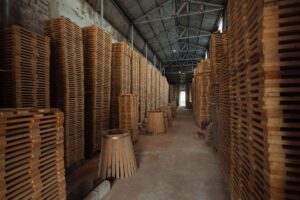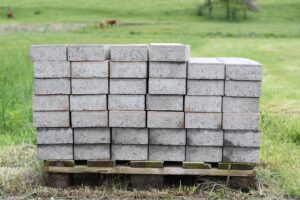India has a rich legacy of martial arts and holistic fitness practices that trace back thousands of years. While yoga and Ayurveda often take center stage, lesser-known but equally powerful are India’s traditional martial arts like Kalaripayattu, Silambam, and Thang-ta—many of which rely heavily on one humble, yet powerful natural resource: bamboo. In this blog, we explore the incredible role bamboo plays in enhancing strength, agility, discipline, and sustainability in Indian martial arts and fitness traditions.
1. Bamboo in Silambam: The Staff of Discipline and Strength
Silambam, an ancient martial art from Tamil Nadu, is centered around a long bamboo staff used for both offense and defense. The word ‘Silambam’ itself refers to this bamboo weapon.
Why Bamboo?
Lightweight and Strong: Bamboo provides an ideal combination of flexibility, strength, and balance.
Responsiveness: Its ability to absorb shock while remaining agile helps build wrist control, speed, and timing.
Accessibility: Bamboo grows abundantly in India, making it a cost-effective and sustainable training tool.
Training Benefits
Improves coordination, reflexes, and body control.
Increases muscular strength through repetitive staff handling.
Teaches discipline and focus, making it a mental and physical workout.
2. Bamboo in Kalaripayattu: Fluid Motion Meets Natural Weaponry
Kalaripayattu, considered one of the oldest martial arts in the world, incorporates bamboo weapons like the Cheruvadi (short stick) and Muchan (long stick).
Role of Bamboo in Kalaripayattu
Used for sparring, balancing drills, and conditioning.
Helps develop fluid movement, simulating hand-to-hand combat at a safe distance.
Practitioners learn to blend grace and precision, using bamboo to mimic the dynamics of swords and spears.
3. Bamboo Fitness Tools in Modern India
Beyond traditional martial arts, bamboo is now finding a place in modern fitness routines, functional training, and even natural bodybuilding.
Examples:
Bamboo Poles for Balance Training: Mimics slacklining but with greater control and core engagement.
Weighted Bamboo Bars: Used for resistance workouts, similar to dumbbells or barbells.
Bamboo Ladders: For agility and footwork drills in sports and martial arts.
Why Fitness Experts Prefer Bamboo Tools
Eco-Friendly: Replaces plastic or synthetic equipment.
Biodegradable: Sustainable and safe for the environment.
Tactile Feedback: Natural texture of bamboo improves grip and sensory response.
4. Healing and Recovery: Bamboo in Massage and Flexibility Practices
Bamboo is also used in recovery and flexibility training through techniques like:
Bamboo Rollers: Used in deep tissue massage to relieve muscle tension post-training.
Bamboo Stretch Poles: Helps in posture correction and spine alignment, especially for martial artists.
These tools support muscle recovery, flexibility, and improved blood flow, allowing athletes to train harder and recover faster.
5. Cultural and Spiritual Significance
In many Indian traditions, bamboo is seen as a symbol of resilience, humility, and growth—qualities that align perfectly with martial arts philosophies. Training with bamboo isn’t just physical—it’s a reminder to remain grounded, flexible, and strong in all aspects of life.
6. Sustainability and Accessibility
Bamboo’s rapid growth and regenerative nature make it a sustainable choice for martial arts equipment. Unlike plastic or metal tools, bamboo leaves a minimal environmental footprint, promoting a circular economy in wellness and fitness.
7. Final Thoughts: Reconnecting with Tradition Through Bamboo
From ancient battlefields to modern training grounds, bamboo has remained a trusted companion in India’s fitness and martial art traditions. It’s not just a stick or a tool—it’s a living testament to the synergy between man, nature, and discipline.
Whether you’re a martial artist, fitness enthusiast, or someone exploring new wellness paths, incorporating bamboo-based practices can elevate your routine while honoring India’s profound cultural roots.






